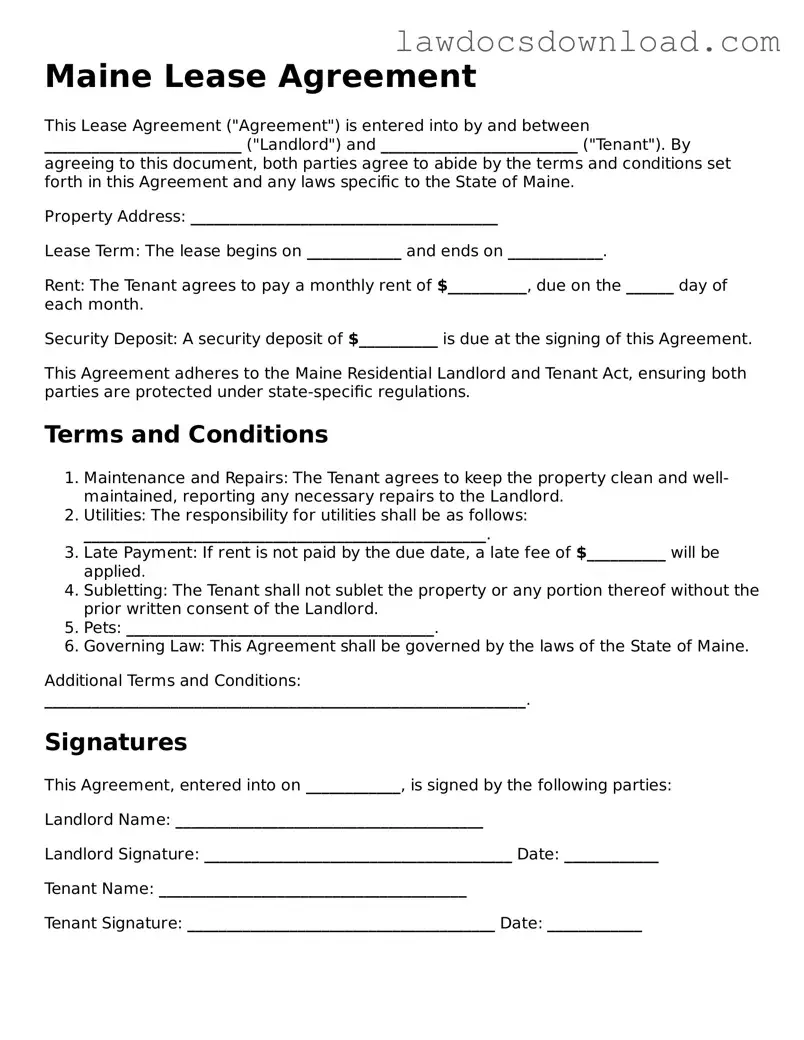Maine Lease Agreement
This Lease Agreement ("Agreement") is entered into by and between _________________________ ("Landlord") and _________________________ ("Tenant"). By agreeing to this document, both parties agree to abide by the terms and conditions set forth in this Agreement and any laws specific to the State of Maine.
Property Address: _______________________________________
Lease Term: The lease begins on ____________ and ends on ____________.
Rent: The Tenant agrees to pay a monthly rent of $__________, due on the ______ day of each month.
Security Deposit: A security deposit of $__________ is due at the signing of this Agreement.
This Agreement adheres to the Maine Residential Landlord and Tenant Act, ensuring both parties are protected under state-specific regulations.
Terms and Conditions
- Maintenance and Repairs: The Tenant agrees to keep the property clean and well-maintained, reporting any necessary repairs to the Landlord.
- Utilities: The responsibility for utilities shall be as follows: ___________________________________________________.
- Late Payment: If rent is not paid by the due date, a late fee of $__________ will be applied.
- Subletting: The Tenant shall not sublet the property or any portion thereof without the prior written consent of the Landlord.
- Pets: _______________________________________.
- Governing Law: This Agreement shall be governed by the laws of the State of Maine.
Additional Terms and Conditions: _____________________________________________________________.
Signatures
This Agreement, entered into on ____________, is signed by the following parties:
Landlord Name: _______________________________________
Landlord Signature: _______________________________________ Date: ____________
Tenant Name: _______________________________________
Tenant Signature: _______________________________________ Date: ____________
